Abstract
An investigation has been made of the combined effects of low temperature and high light on the level of several photosynthetic products in the leaves of a group of plants differing widely in their tolerance to this stress. Starch levels in these plants after chilling are dependent on the time of day that temperatures are lowered and seem related to rates of CO2 assimilation under this stress. Prolonged low-temperature, high-light treatment (10 C at 160 wm−2) of Sorghum bicolor induced a rapid starch hydrolysis after a lag of some 24 hours. Differing rates of starch loss at the cellular level and a rapid migration of chloroplasts toward the base of upper mesophyll cells were also seen in leaves of this stress-sensitive species.
Chilling increased the level of almost all free amino acids in tolerant and in semi-tolerant species, while amino acids related to intermediates of the C4-pathway show a sharp or transitory decrease in Sorghum. These and other changes observed in Sorghum suggest that some time- and temperature-dependent blockages develop in the interconversion of C4-pathway intermediates and possibly in the flow of other intermediates to and from the sites of C4-photosynthesis.
Levels of ATP in the leaves of Sorghum, Paspalum, and Amaranthus increased at night and following chilling and did not fall until pronounced necrosis of the leaves commenced.
Full text
PDF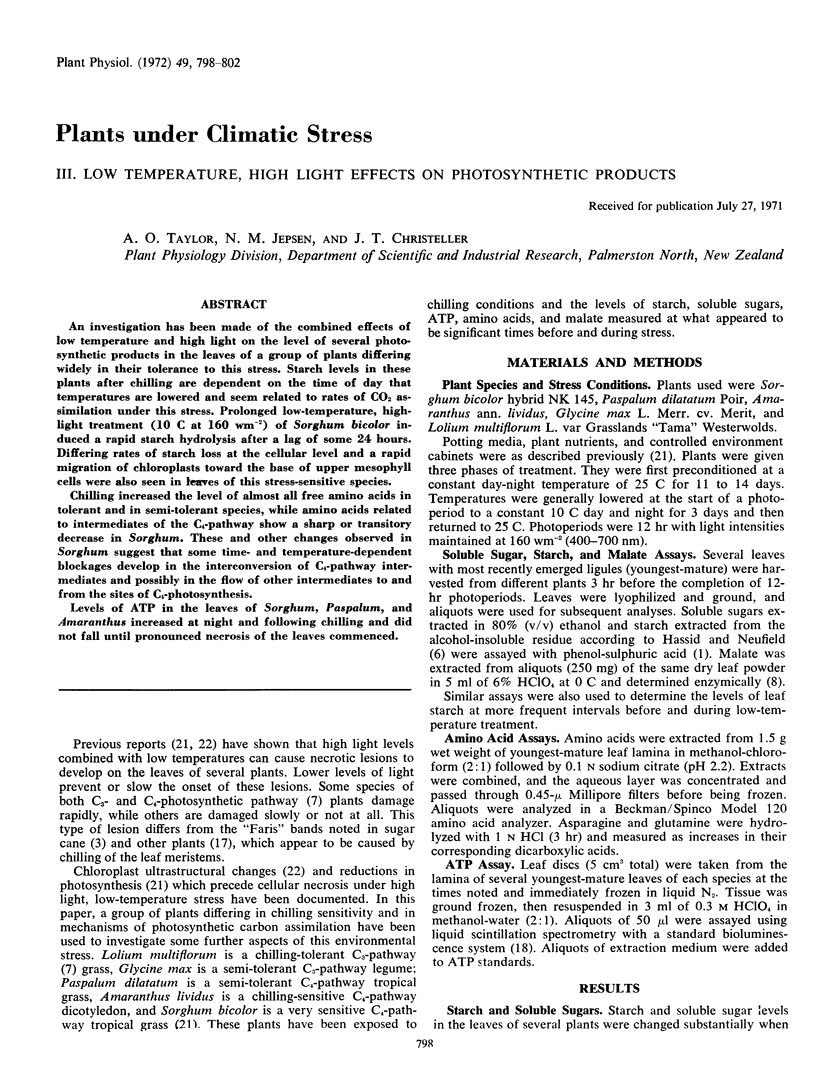
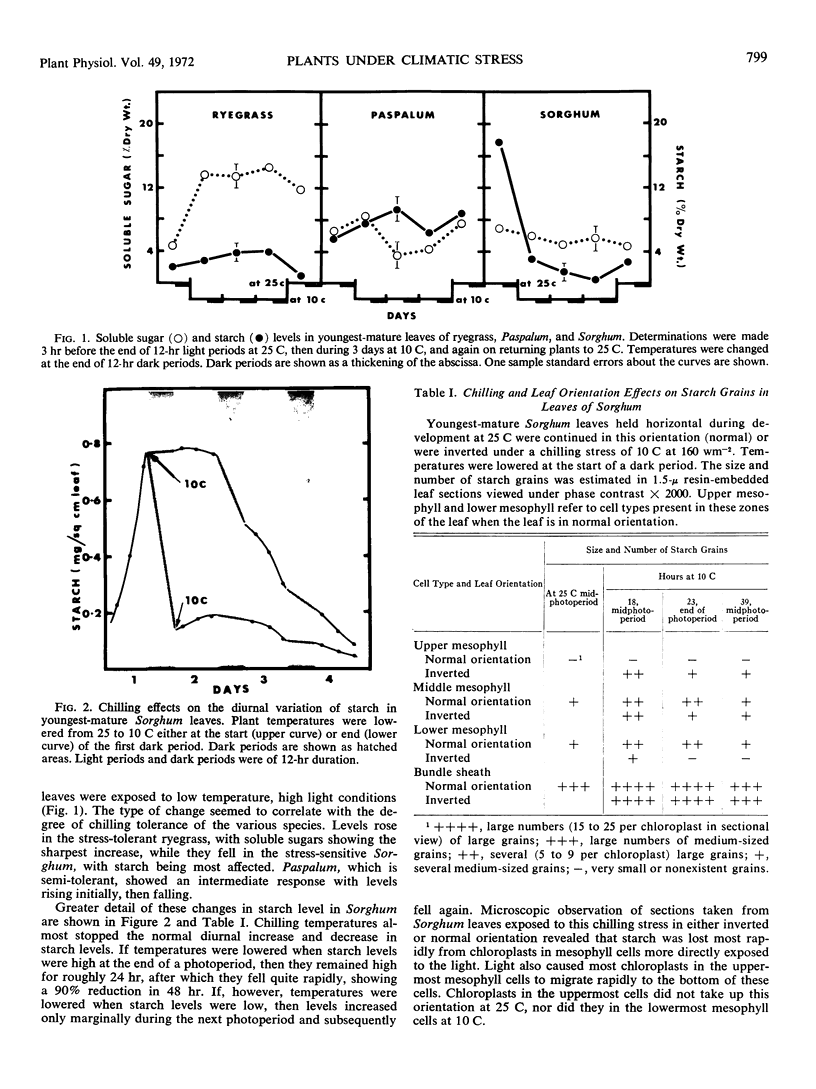
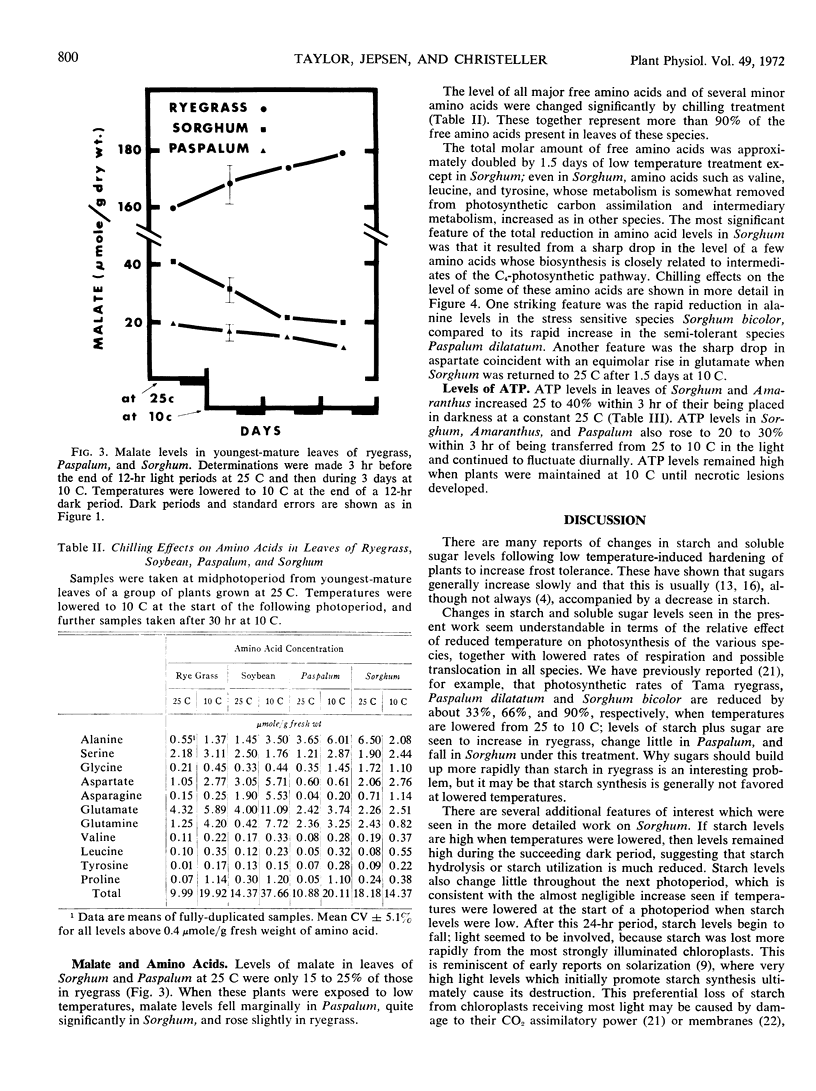
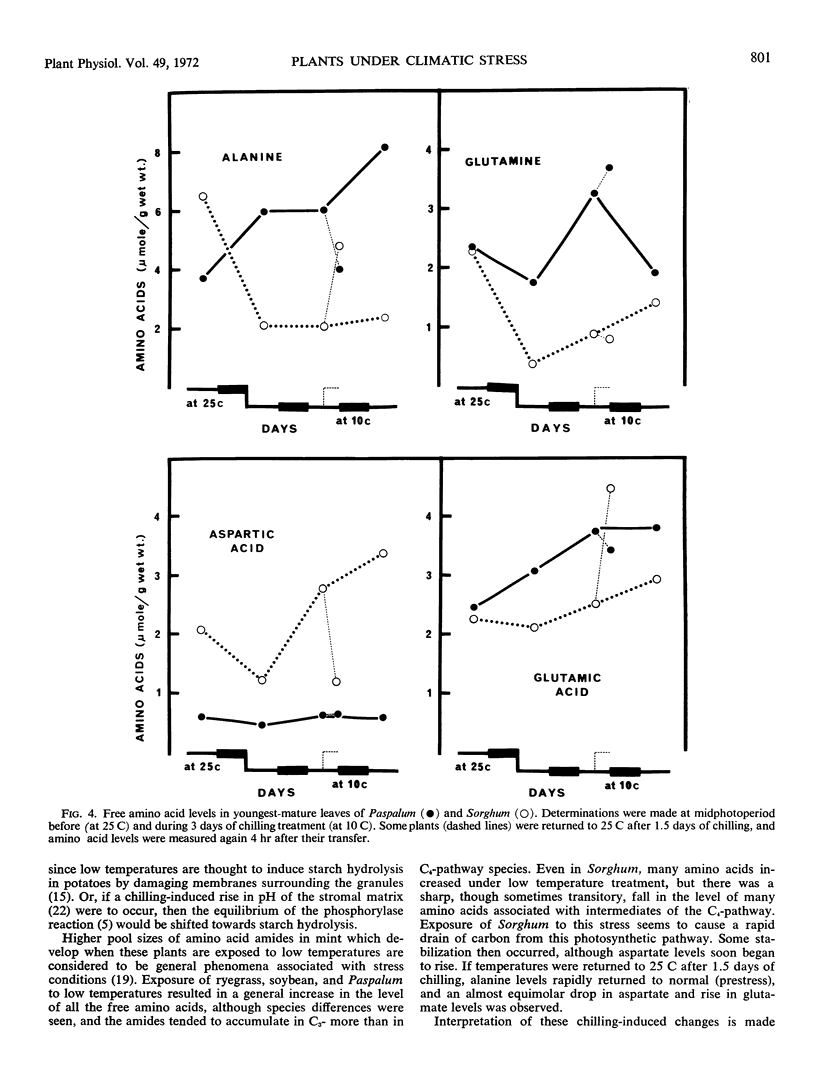
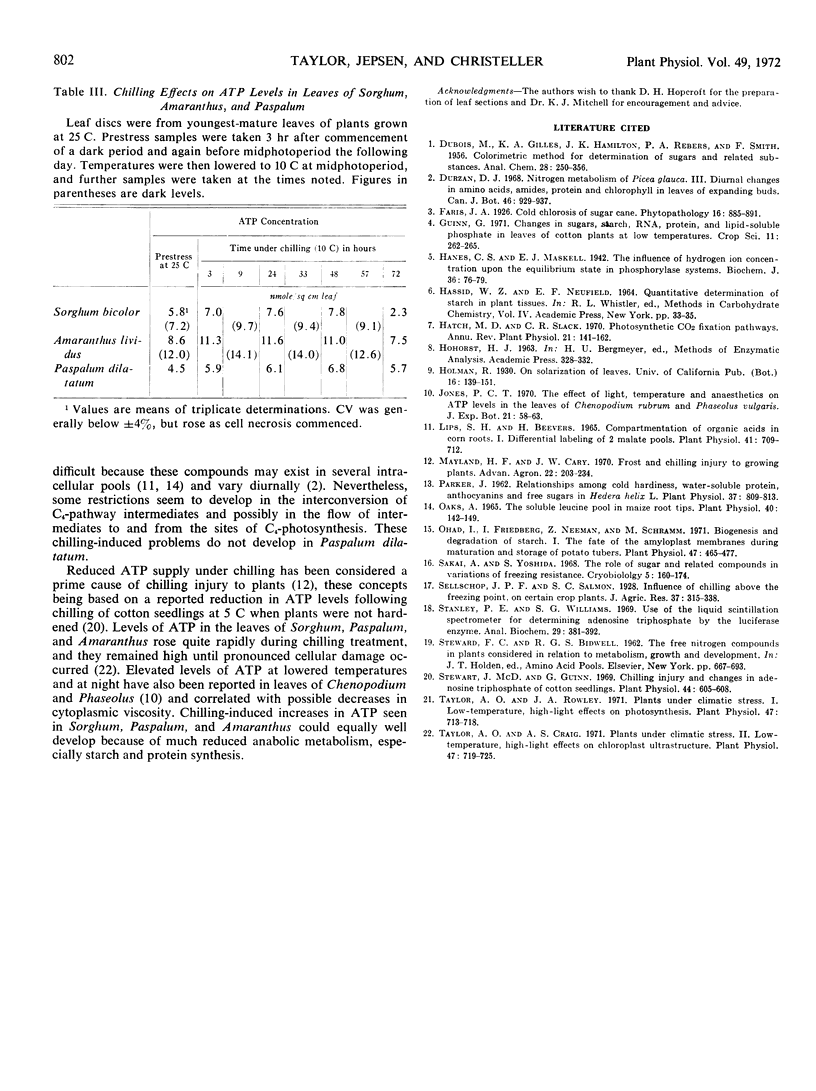
Images in this article
Selected References
These references are in PubMed. This may not be the complete list of references from this article.
- Hanes C. S. The influence of hydrogen-ion concentration upon the equilibrium state in phosphorylase systems. Biochem J. 1942 Feb;36(1-2):76–79. doi: 10.1042/bj0360076. [DOI] [PMC free article] [PubMed] [Google Scholar]
- Lips S. H., Beevers H. Compartmentation of organic acids in corn roots I. Differential labeling of 2 malate pools. Plant Physiol. 1966 Apr;41(4):709–712. doi: 10.1104/pp.41.4.709. [DOI] [PMC free article] [PubMed] [Google Scholar]
- Oaks A. The soluble leucine pool in maize root tips. Plant Physiol. 1965 Jan;40(1):142–149. doi: 10.1104/pp.40.1.142. [DOI] [PMC free article] [PubMed] [Google Scholar]
- Ohad I., Friedberg I., Ne'eman Z., Schramm M. Biogenesis and Degradation of Starch: I. The Fate of the Amyloplast Membranes during Maturation and Storage of Potato Tubers. Plant Physiol. 1971 Apr;47(4):465–477. doi: 10.1104/pp.47.4.465. [DOI] [PMC free article] [PubMed] [Google Scholar]
- Parker J. Relationships among cold hardiness, water-soluble protein, anthocyanins, & free sugars in Hedera helix L. Plant Physiol. 1962 Nov;37(6):809–813. doi: 10.1104/pp.37.6.809. [DOI] [PMC free article] [PubMed] [Google Scholar]
- Sakai A., Yoshida S. The role of sugar and related compounds in variations of freezing resistance. Cryobiology. 1968 Nov-Dec;5(3):160–174. doi: 10.1016/s0011-2240(68)80161-0. [DOI] [PubMed] [Google Scholar]
- Stanley P. E., Williams S. G. Use of the liquid scintillation spectrometer for determining adenosine triphosphate by the luciferase enzyme. Anal Biochem. 1969 Jun;29(3):381–392. doi: 10.1016/0003-2697(69)90323-6. [DOI] [PubMed] [Google Scholar]
- Stewart J. M., Guinn G. Chilling injury and changes in adenosine triphosphate of cotton seedlings. Plant Physiol. 1969 Apr;44(4):605–608. doi: 10.1104/pp.44.4.605. [DOI] [PMC free article] [PubMed] [Google Scholar]
- Taylor A. O., Craig A. S. Plants under Climatic Stress: II. Low Temperature, High Light Effects on Chloroplast Ultrastructure. Plant Physiol. 1971 May;47(5):719–725. doi: 10.1104/pp.47.5.719. [DOI] [PMC free article] [PubMed] [Google Scholar]
- Taylor A. O., Rowley J. A. Plants under Climatic Stress: I. Low Temperature, High Light Effects on Photosynthesis. Plant Physiol. 1971 May;47(5):713–718. doi: 10.1104/pp.47.5.713. [DOI] [PMC free article] [PubMed] [Google Scholar]



